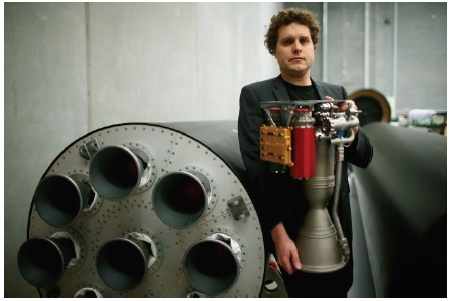Researchers from the Korea Aerospace Research Institute examine the fine details of 3D printing rocket parts, releasing the findings of their study in ‘Technology Trends in Additively Manufactured Small Rocket Engines for Launcher Applications.’
As so many space startups today become involved in the manufacturing of launch vehicles, 3D printing often plays a major role in production—offering all the classic benefits such as affordability, speed in manufacturing, the ability to innovate like never before, and best of all, no middleman. Space X, Rocket Lab, and of course NASA too have all put 3D printing in the headlines whether in showing off 3D printed thrusters, or entire rockets.
In this study, the researchers fabricated an existing valve housing for a rocket engine, investigating the future potential of such technology, as well as how cost could be reduced for projectile engines. Looking to the SpaceX SuperDraco, the research team followed AM progress in aerospace. Further, they discuss Rocket Lab’s Rutherford engine, used for the Electron projectile which eventually reached space orbit in 2018. The engineers were able to 3D print nearly all the parts, sending an engine with a ground thrust of 24 kN and a ground specific thrust of 311 seconds successfully into space.

Peter Beck, CEO of the private spaceflight company Rocket Lab, holding a Rutherford engine and standing next to an Electron Rocket
The turbopump is one of the most complex parts of the engine, leaving the researchers to note that much more time must be spent on this component for design, analysis, and verification. Divided into many different parts, and each with a separate manufacturing method, the turbopump makes up 45 percent of the cost of the entire engine.
“Accordingly, attempts to incorporate AM technology into the production of turbopumps have been made in various forms in various countries,” stated the researchers. “The turbopump requires a differentiated AM strategy because the shape of the main parts is complicated and there are shape constraints required to implement the function.”
SpaceX, acting as the precursor and inspiration to many in terms of projectile startups—and additive manufacturing processes, demonstrated the benefits of such progressive, forward thinking in production. NASA, using 3D printing for decades already, has continued to fabricate parts for a variety of projects, including production of smaller turbopumps. In developing tasks such as the Low Cost Upper Stage Project and the Additive Manufacturing Demonstrator Engine, NASA continues to demonstrate and recognize reduction in cost, more efficient schedules, and flexibility in design.
Currently, the ESA is planning to build a methane engine (Prometheus), while Sweden’s GKN is said to be producing turbine disks and casings via additive manufacturing. And as variety of countries and organizations engineer new aerospace components, Japan is developing an H-3 projectile—featuring an expander-bleed engine—instead of a previous ‘fuel-rich’ multistage engine. IHI is currently creating a 3 ton-class methane expander engine. While they may be saving on time and cost, there are also claims that increased surface roughness affected performance:
“In the case of the turbopump under development, the pump head was raised by up to 15% or more by improving the roughness of the impeller,” stated the researchers.
FIG 13
“The only engines that succeeded in launching using additive manufacturing were SpaceX’s SuperDraco and Rocket Lab’s Rutherford Engine by the end of 2019,” concluded the researchers.
“Currently, most of the materials used for the additive manufacturing of projectile engine parts were Inconel 718, and some companies used Ti-6Al-4V or copper alloy.”
What do you think of this news? Let us know your thoughts; join the discussion of this and other 3D printing topics at 3DPrintBoard.com.
[Source / Images: ‘Technology Trends in Additively Manufactured Small Rocket Engines for Launcher Applications’]
Subscribe to Our Email Newsletter
Stay up-to-date on all the latest news from the 3D printing industry and receive information and offers from third party vendors.
Print Services
Upload your 3D Models and get them printed quickly and efficiently.
You May Also Like
The Dental Additive Manufacturing Market Could Nearly Double by 2033, According to AM Research
According to an AM Research report from 2024, the medical device industry, specifically in dentistry, prosthetics, and audiology, is expected to see significant growth as these segments continue to benefit from...
Heating Up: 3D Systems’ Scott Green Discusses 3D Printing’s Potential in the Data Center Industry
The relentless rise of NVIDIA, the steadily increasing pledges of major private and public investments in national infrastructure projects around the world, and the general cultural obsession with AI have...
AM Research Webinar Explores Continuum’s Sustainable Metal Additive Manufacturing Powders
Metal additive manufacturing (AM) powder supplier Continuum Powders is working to develop solutions that empower industries to reduce waste and optimize their resources. An independent life cycle assessment (LCA) of...
3D Printed Footwear Startup Koobz Lands $7.2M in Seed Round
California-based Koobz is focused on reshoring the U.S. footwear supply chain with advanced manufacturing processes, including 3D printing. The startup just announced that it has added $6 million to its...




































